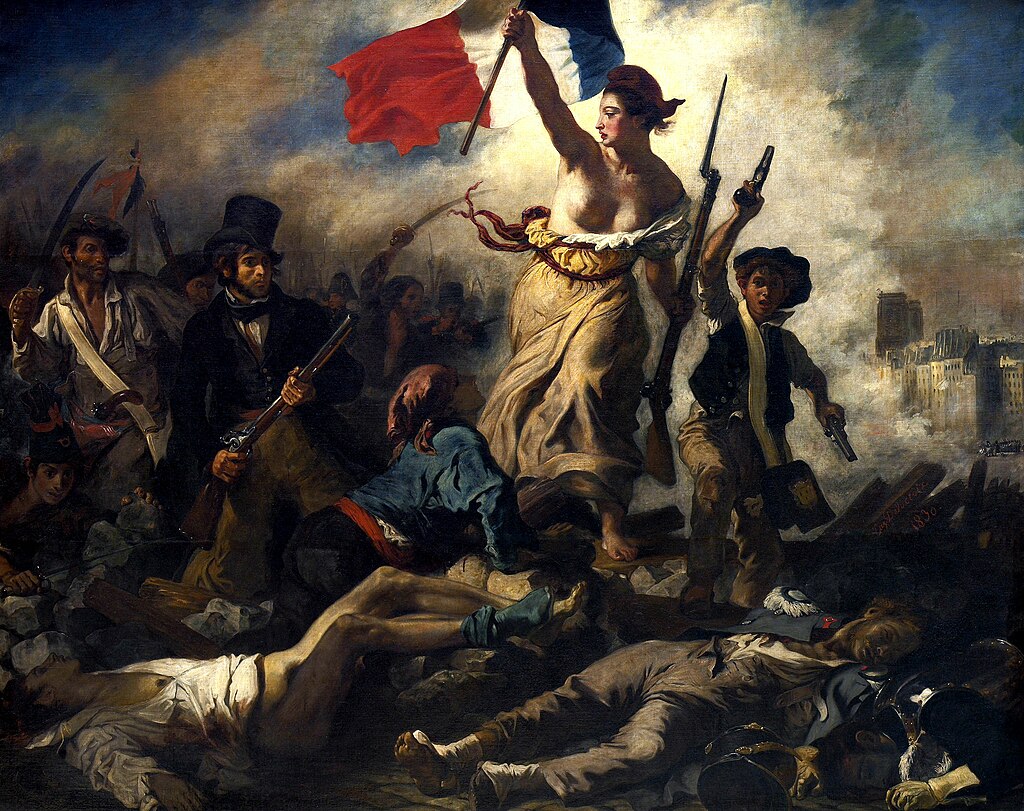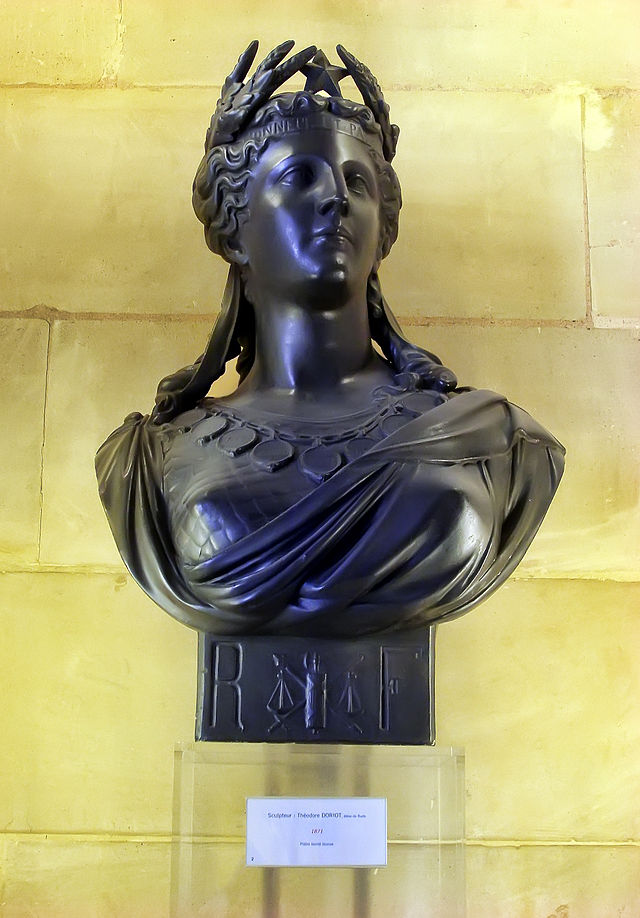Henri de Toulouse-Lautrec
(1864–1901, French Post-Impressionist)
Toulouse-Lautrec had his own table and studio (in a lounge) at the Moulin Rouge.
At the Moulin Rouge
- Henri de Toulouse-Lautrec
- oil on canvas (123 × 140 cm) 1892-95
- Art Institute of Chicago
- Henri de Toulouse-Lautrec
- oil on canvas (123 × 140 cm) 1892-95
- Art Institute of Chicago
Quadrille at the Moulin Rouge
- Henri de Toulouse-Lautrec
- oil & gouache on cardboard (80 x 61 cm) 1892
- National Gallery of Art (Washington)
Woman with a Black Boa
- Henri de Toulouse-Lautrec
- oil on cardboard (91 x 61 cm) 1892
- Musée d'Orsay (Paris)
- Henri de Toulouse-Lautrec
- oil on cardboard (85 x 45 cm) c.1892
- Musée d'Orsay (Paris)
(aka Dans le lit, 'In Bed')
- Henri de Toulouse-Lautrec
- oil on cardboard on wood (54 x 70 cm) c.1892
- Musée d'Orsay (Paris)
Moulin Rouge: La Goulue
- Henri de Toulouse-Lautrec
- poster (191 x 117 cm) 1891
Ambassadeurs: Aristide Bruant dans son cabaret
- Toulouse-Lautrec, Henri de
- poster ( 150 x 100 cm) 1892
Japanese ukiyo-e paintings, especially Utarmaro's,
at the Paris Expo inspired Toulouse-Lautrec.
- Utarmaro/喜多川歌麿 (1753-1806, Japanese)
- Ukiyo-e woodcut (39 × 26 cm) 1790
- Honolulu Museum of Art
He even created his logo/signature (initials H.T.L.) like Utarmaro's.
娘日時計・未ノ刻
- 喜多川歌麿
- 絵画 (江戸時代) 18世紀
- 東京国立博物館
- 喜多川歌麿
- 絵画 (江戸時代) 18世紀
- 東京国立博物館
酉ノ刻
這張圖描繪的是花魁準備入場的景象,
一旁還有比較低階的遊女幫忙打燈,
對比著身著貴雅磚紅和服,
且擁有模特身材十頭身的花魁,
在畫面上一高一低,
視覺上形成強烈的衝擊性。
Jane Avril at the Jardin de Paris
- Henri de Toulouse-Lautrec
- lithograph (129 x 94 cm) 1893
- The Metropolitan Museum of Art (NYC)
- Henri de Toulouse-Lautrec
- poster (32 x 23 cm) 1896
- Swann Auction Galleries
La Chaîne Simpson BICYCLE CHAINS
- Henri de Toulouse Lautrec
- poster, 1896
At the Salon of the rue des Moulins
- Henri deToulouse-Lautrec
- oil on cardboard, 1894
- Musée Toulouse-Lautrec (Albi)
Rue des Moulins
- Henri de Toulouse-Lautrec
- oil on cardboard on wood (83 x 61 cm) 1894
- National Gallery of Art (Washington)
The Medical Inspection at the Rue des Moulins Brothel
Miss Dolly
An English Barmaid at the Star Bar-café
- Henri de Toulouse-Lautrec
- (41 x 33 cm) 1899
- Musée Toulouse-Lautrec (Albi)
La Modiste: Mademoiselle Margouin
- Henri de Toulouse-Lautrec
- color on cardboard (61 x 50 cm) 1900
- Musée Toulouse-Lautrec (Albi)
The Countess Adèle de Toulouse-Lautrec
in the living room of the Château de Malromé
- Henri de Toulouse-Lautrec
- oil on canvas (94 x 81 cm) 1886/1883
- Musée Toulouse-Lautrec (Albi)
Mother of Henri de Toulouse-Lautrec.
Maurice Joyant Somme bay
- Henri de Toulouse-Lautrec
- oil on canvas (117 x 81 cm) 1900
- Musee Toulouse-Lautrec (Albi)
After Toulouse-Lautrec's death, his mother (above L) and his art dealer (above R), Maurice Joyant, continued promoting his artwork. His mother contributed funds for a museum to be created in Albi, his birthplace, to show his works. This Musée Toulouse-Lautrec owns the most extensive collection of his works:






_Rousse_(La_Toilette)_-_1889_-_Henri_de_Toulouse-Lautrec_-_Mus%C3%A9e_d'Orsay,_Paris.jpg)

_1891.jpg)







_1895.jpg)




_La_modiste,_Melle_Louise_Blouet_dite_d'Enguin_1900_-_Toulouse-Lautrec,_MTL.212.jpg)
_La_Comtesse_Ad%C3%A8le_de_Toulouse-Lautrec_dans_le_salon_du_Ch%C3%A2teau_de_Malrom%C3%A9_-_Toulouse-Lautrec_MTL.inv122.jpg)

_Entr%C3%A9e_du_Mus%C3%A9e_Toulouse-Lautrec_sur_la_place_sainte_C%C3%A9cile.jpg)










.JPG/800px-Eug%C3%A8ne_Delacroix_-_Jeune_orpheline_au_cimeti%C3%A8re_(vers_1824).JPG)
.jpg)












.jpg)


